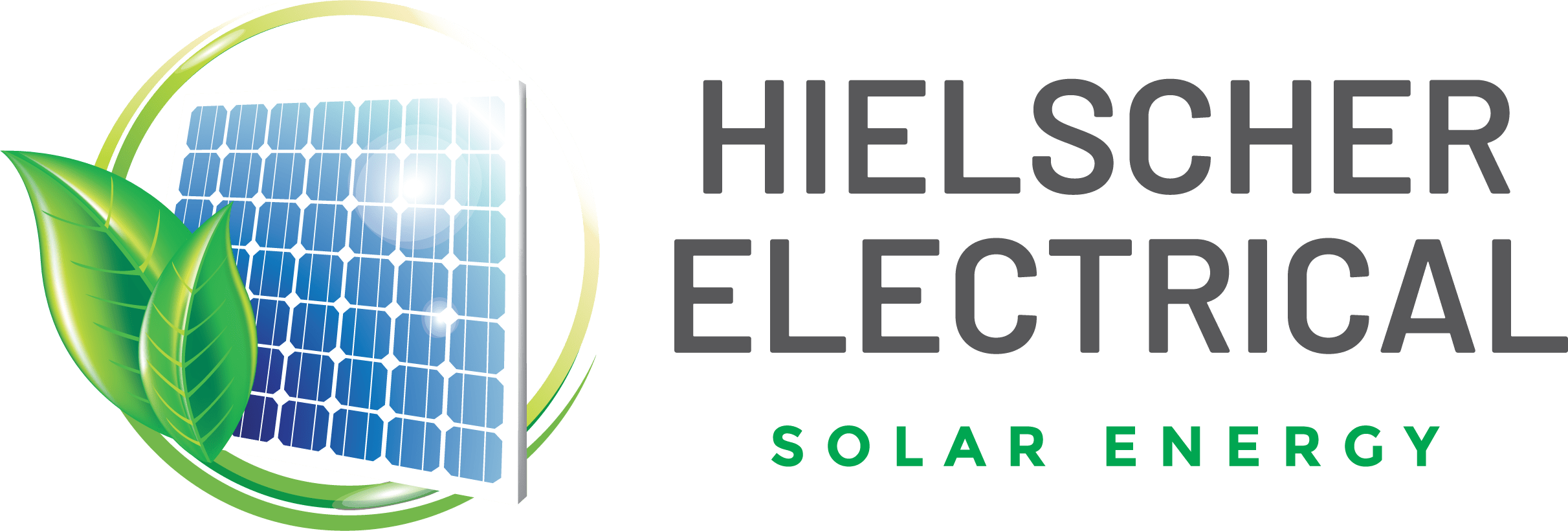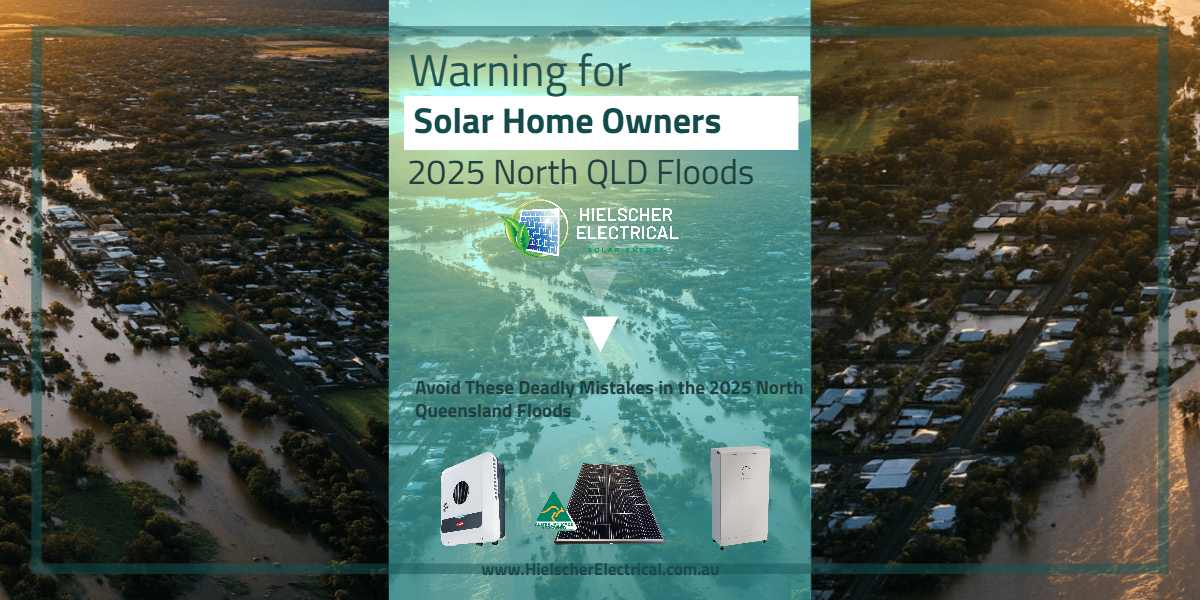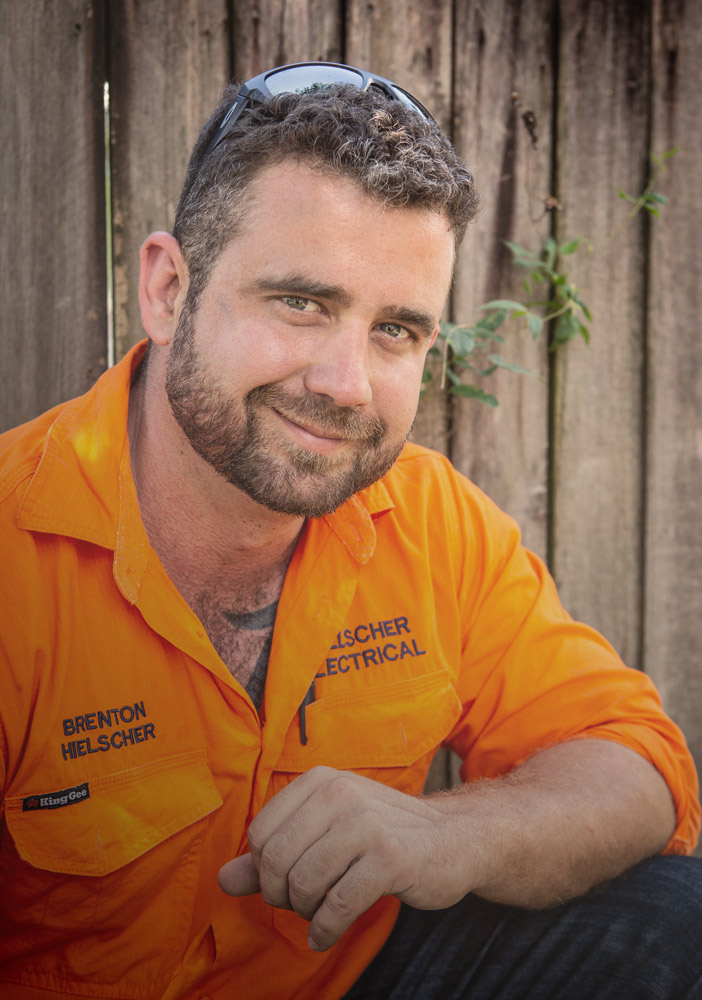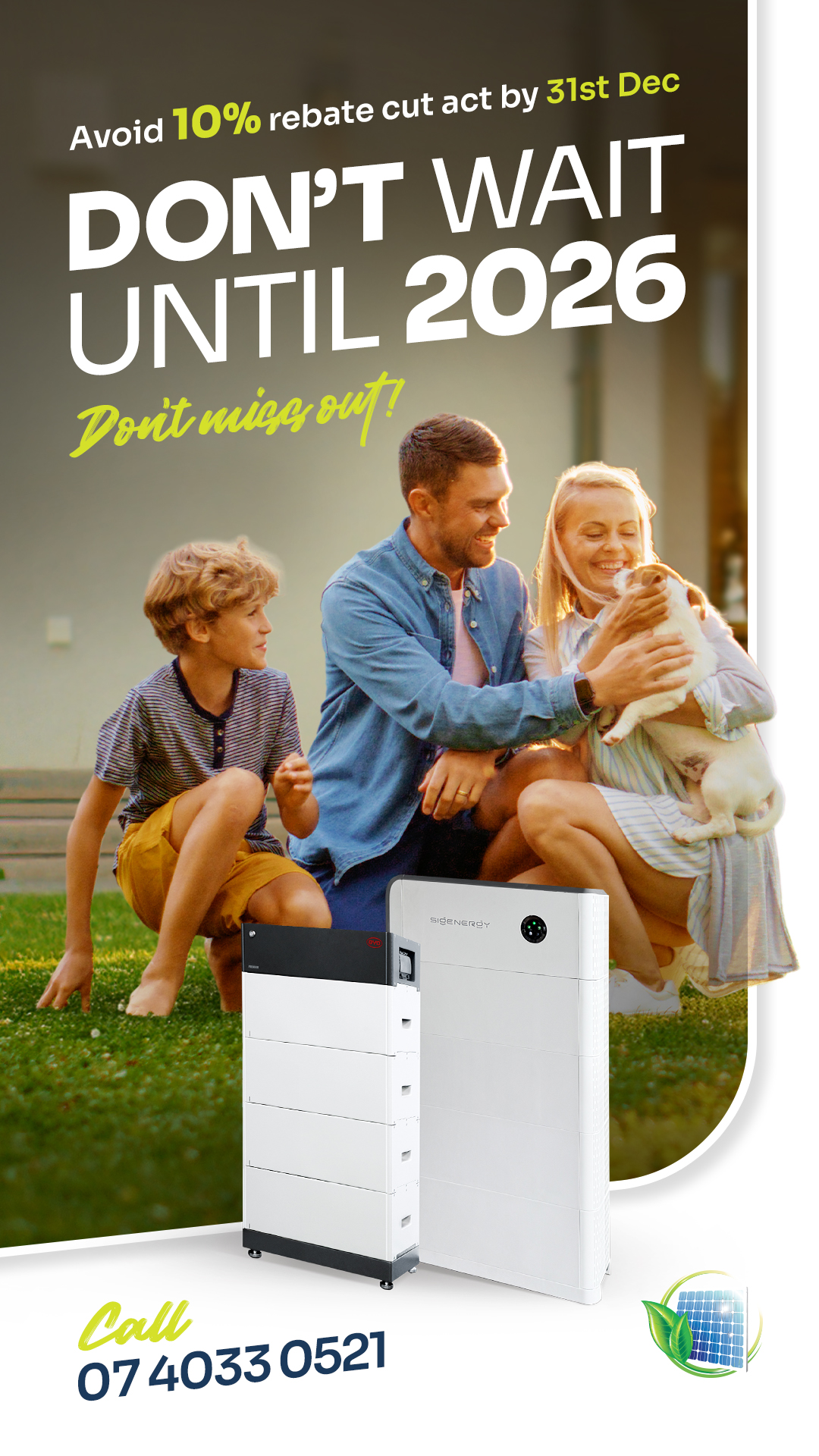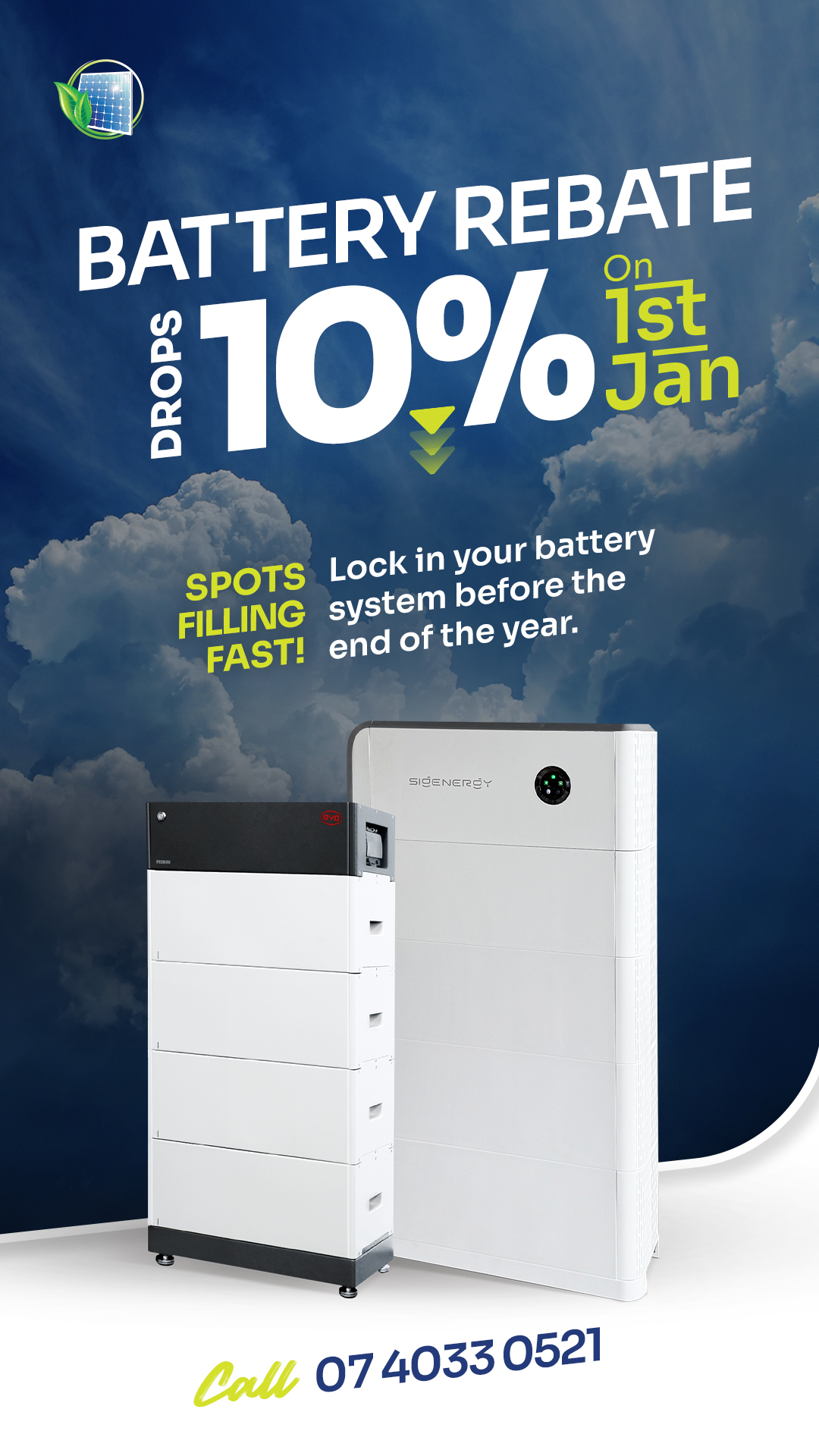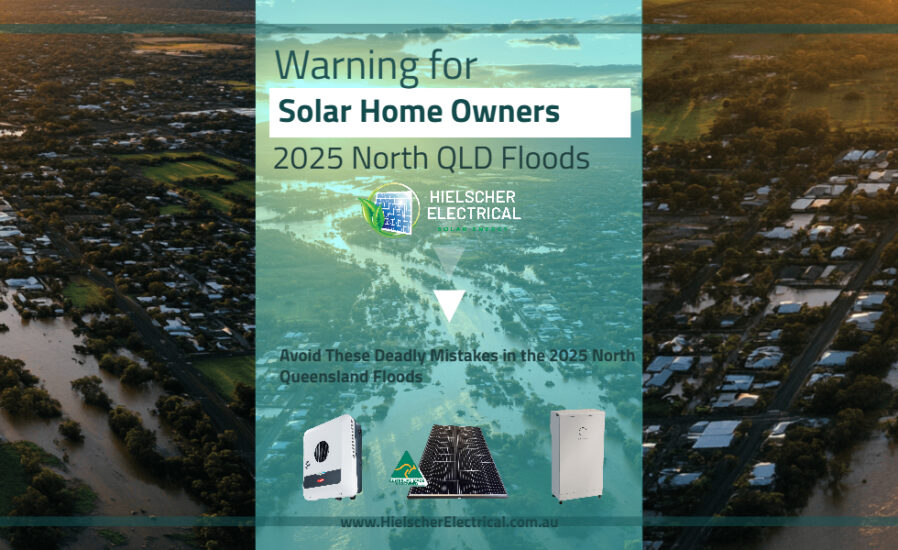
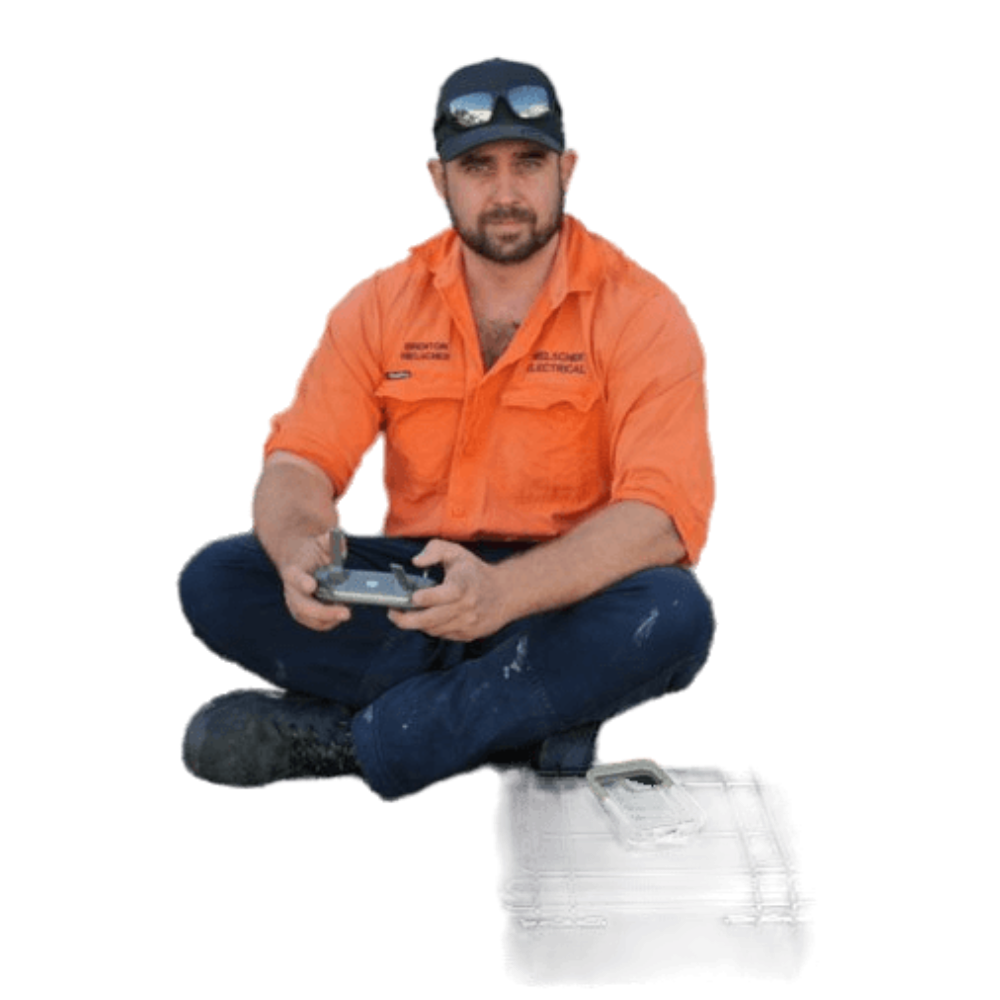
“In this guide, we’ll take a birds eye view on how to safely manage your solar system before, during, and after a flood, ensuring your home, family, and emergency responders stay safe.“
North Queensland has just endured one of its worst flood events in history. Townsville recorded 991.8mm of rain in just the first seven days of February, while places like Rollingstone (1,549mm), Halifax (1,277mm), and Cardwell (1,357mm) experienced their highest-ever monthly rainfall totals.
The Herbert and Burdekin Rivers continue to rise, with entire towns—including Ingham, Paluma, and Macknade—cut off by floodwaters. Emergency services are working tirelessly, with helicopters delivering food and supplies to stranded residents, but the flood emergency isn’t over yet. More heavy rainfall is forecast in the coming days, and communities from Mission Beach to the Tablelands remain on high alert.
In disasters like this, electrical safety is critical—especially for those with solar power systems. While many assume solar panels stop working when the grid goes down, the reality is that they continue to generate electricity during daylight hours, potentially creating a serious electrocution hazard.
In this guide, we’ll outline how to safely manage your solar system before, during, and after a flood, keeping your home, family, and emergency responders safe.
(For a detailed look at solar safety during Cairns flood events, check out my previous article: Solar Power System Safety – Cairns Flood Events.)
North Queensland’s Flood Disaster: A Wake-Up Call
The 2025 North Queensland floods have been nothing short of catastrophic. Towns like Ingham, Tully, Innisfail and Paluma remain cut off, while emergency helicopters deliver food and supplies to stranded residents. The Herbert River at Ingham surged past its record 1967 levels, and authorities warn that with more rain on the way, the situation could worsen.
Queensland Premier David Crisafulli described the flooding as a “once-in-a-century event.” For communities already reeling from past disasters—such as the 2019 Townsville floods and the 2023 Cairns and Daintree floods—this event is yet another devastating blow.
What’s causing this? Experts say climate change is intensifying extreme rainfall, with warmer oceans fuelling tropical lows that stall over land, dumping record-breaking amounts of rain. The Bureau of Meteorology has warned that more monsoonal surges and tropical cyclones could develop in the coming weeks.
For those in flood-affected areas like Mission Beach, Hinchinbrook, Cardwell, and the Tablelands, staying informed and prepared is crucial.
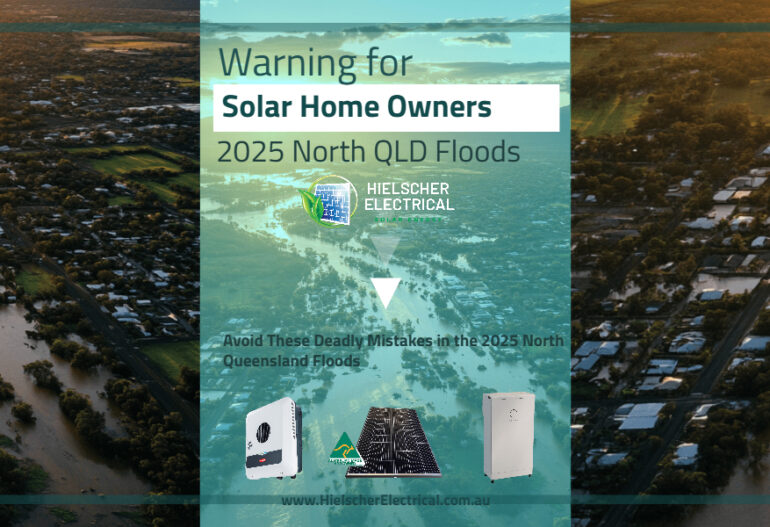
Solar Power System Safety During Flood Events: What You Need to Know
Severe weather events like floods are a part of life in North Queensland, and while most of us prepare our homes and businesses for potential water damage, one critical area that often gets overlooked is solar power system safety. If you own a solar PV system in North Queensland, it’s essential to know how to manage it before, during, and after a flood to keep yourself and emergency crews safe.
In light of recent flooding in North Queensland and surrounding areas, let’s go through the key steps you need to take to ensure your solar system doesn’t pose an electrical hazard.
Before a Flood: How to Safely Shut Down Your Solar System
When a flood warning is issued, take proactive steps to shut down your solar system. This reduces the risk of electrical hazards and potential damage to your system.
Follow These Shutdown Steps (If Safe to Do So):
- Turn off the inverter AC mains isolator – This is usually found in the meter box and labeled as the “solar supply mains switch.”
- Turn off the mains supply switch – This is the main power switch in your meter box.
- Turn off the DC isolator switch – Located near your inverter or battery system.
- If floodwaters are expected to reach your roof, consider shutting off the rooftop DC isolator (next to your solar panel array). However, never climb onto a roof in wet or dangerous conditions—this step should be done well in advance or by a qualified electrician.
💡 Important: If any switches are already wet, do not touch ter and electricity are a deadly combination. If in doubt, contact your installer for advice.
During a Flood: Staying Safe Around Your Solar System
Even if your mains power is turned off, solar panels continue generating electricity during daylight hours. This means that a wet or submerged solar system can pose a serious risk of electrocution.
What to Do During a Flood Event:
✔ Stay away from all electrical components – If your inverter, batteries, or wiring are underwater, assume they are live.
✔ Do not attempt to turn off the system – If water has already reached your inverter or switchboard, do not touch anything.
✔ Avoid rooftops with solar panels – If you must evacuate to the roof, stay well clear of the panels and wiring.
🚨 Emergency Tip: If you see fallen power lines or suspect any electrical hazards, call Triple Zero (000) or Energex on 13 19 62 immediately.
After a Flood: Inspecting and Restarting Your Solar System
Once floodwaters have receded, do not switch your solar system back on until it has been checked by a licensed electrician or Clean Energy Council (CEC) accredited installer. Moisture can remain in components and cause dangerous faults.
Post-Flood Solar Safety Checklist:
✔ Do not touch or attempt to reconnect the system – Even if it appears dry.
✔ Contact a licensed electrician or accredited solar installer to assess your system.
✔ If your inverter has been submerged (even partially), it must be replaced.
✔ Inspect your roof for damage before attempting to turn the system back on—damaged panels or exposed wiring can still pose a danger.
⚡ Remember: Treat all solar systems as live until they have been certified safe by a professional.
🚨 Emergency Tip: If you see fallen power lines or suspect any electrical hazards, call Triple Zero (000) or Energex on 13 19 62 immediately.
Final Thoughts: Be Prepared & Stay Safe
Floods can be unpredictable, but knowing how to handle your solar power system can help protect your home, your family, and emergency responders from potential electrical hazards. If you live in a flood-prone area, take the time to familiarise yourself with your system’s shutdown procedures and keep your installer’s contact details handy.
If you need professional advice or assistance with your solar system after a flood, contact a Clean Energy Council-accredited installer or a licensed electrical contractor to ensure your system is safe before reconnecting.
👉 Need help with your solar system post-flood? Reach out to Hielscher Electrical if your in Far North Queensland, or a licensed solar professional in your local area if you’re south of Townsville. 🌞
🚨 For the latest flood warnings and emergency updates, visit:
📌 Bureau of Meteorology Queensland Flood Warnings (bom.gov.au)
📌 Queensland Disaster Management (disaster.qld.gov.au)
📌 Your Local Council Website
Stay safe, North Queensland—we’ll get through this together. 💪
